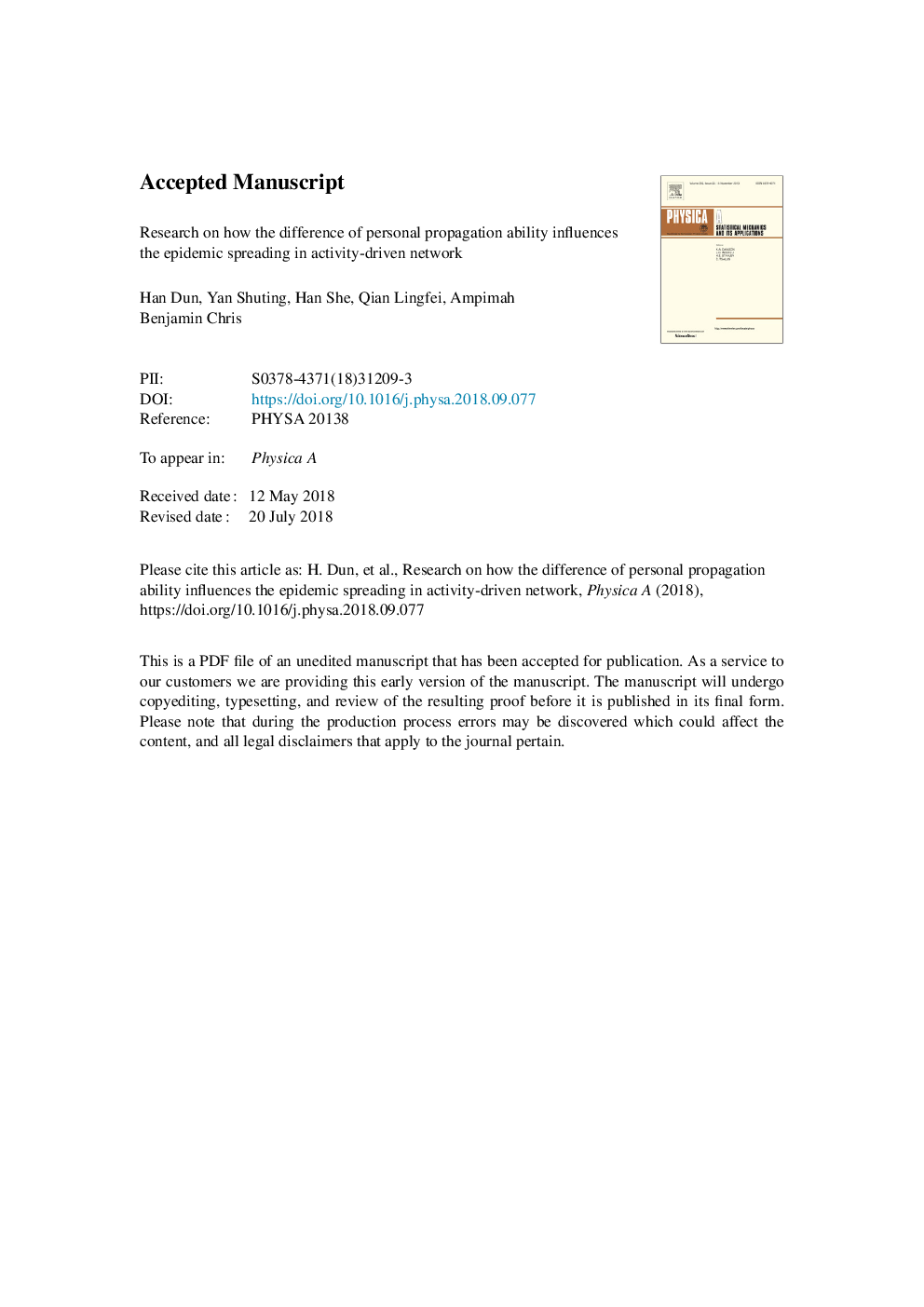| Article ID | Journal | Published Year | Pages | File Type |
|---|---|---|---|---|
| 11023327 | Physica A: Statistical Mechanics and its Applications | 2019 | 10 Pages |
Abstract
Considering the differences of individuals' activities and personal propagation ability in real life, a new type of epidemic propagation model in activity-driven network is proposed. By employing the mean-field theory, we theoretically derive the epidemic spreading threshold, and using numerical simulation methods to further study our model in cases where the individual's activity rate is not related to propagation ability or related conditions. The results indicate that, when individuals' activity rate has no correlation to personal propagation ability, the epidemic threshold has a wide-ranging with the change of the average activity rate and the average propagation ability. When the recovery rate is small, individuals' average activity rate has less effect on the density of infected. If an individual's activity rate negatively correlates to his propagation ability, there is no significant correction between propagation ability and personal infected frequency. However, when the individual's activity rate and propagation ability are positively correlated, propagation ability and personal infected frequency show a strong positive correlation. Our research provide a feasible method to explore how the differences of individuals' activities and personal propagation ability affect the epidemic spreading.
Keywords
Related Topics
Physical Sciences and Engineering
Mathematics
Mathematical Physics
Authors
Han Dun, Yan Shuting, Han She, Qian Lingfei, Ampimah Benjamin Chris,
